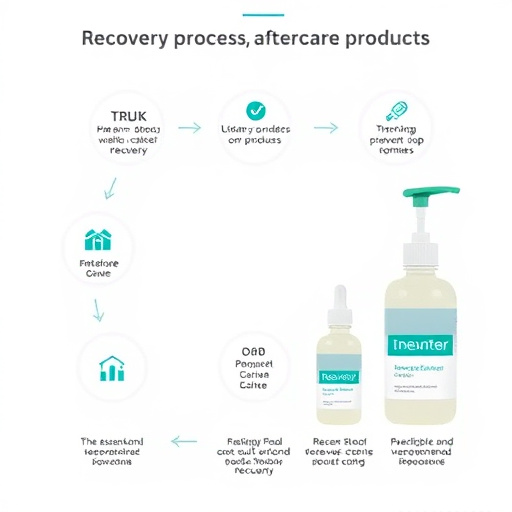Legal cold air intake (CAI) systems are vital tools for reducing vehicle emissions, especially in high-performance cars. By drawing in cooler, denser air from outside the vehicle through a strategically designed air box, these systems optimize engine airflow, leading to more efficient combustion and lower pollutant output. This technology is crucial for regions with strict emissions regulations, helping vehicles meet environmental standards while enhancing performance. With cities worldwide grappling with smog caused by pollutants like nitrogen oxides and particulate matter, efficient CAI systems are essential for creating sustainable urban environments.
In today’s world, tackling urban smog has become a paramount concern for environmental health. As cities grapple with rising vehicle emissions, understanding effective solutions is crucial. Legal cold air intake (CAI) systems emerge as a game-changer in the fight against pollution. This article delves into the pivotal role of these advanced intake systems in emissions control. We explore their mechanism, the profound impact of smog on urban environments, and highlight key features that make modern CAI systems indispensable for reducing vehicle emissions and fostering cleaner air.
- Understanding Legal Cold Air Intake Systems and Their Role in Emissions Control
- The Impact of Smog on Cities and the Environment: A Case for Efficient Intake Systems
- Key Features and Benefits of Advanced Legal Intake Systems for Reduced Emissions
Understanding Legal Cold Air Intake Systems and Their Role in Emissions Control

Legal cold air intake (CAI) systems are an essential component in the fight against harmful emissions, particularly in vehicles designed for performance and speed. These advanced systems work by optimizing the airflow into an engine, allowing for more efficient combustion and reduced pollutant output. By drawing in cooler, denser air from outside the vehicle, legal CAIs enhance the engine’s performance while also lowering emissions.
This technology plays a crucial role in meeting environmental standards, especially in regions with stringent regulations on vehicle emissions. Unlike traditional intake systems that draw air from the engine compartment, legal cold air intakes are strategically designed to capture air from the side or front of the vehicle, often using a distinct, high-flow air box. This design ensures that the incoming air remains at a lower temperature, rich in oxygen, which is vital for optimal combustion and significant in reducing smog-forming pollutants.
The Impact of Smog on Cities and the Environment: A Case for Efficient Intake Systems

Smog, a harmful mix of pollutants like nitrogen oxides and particulate matter, significantly impacts urban environments, posing serious health risks to residents. In densely populated cities, where vehicle emissions contribute substantially to smog formation, the consequences are particularly severe. Legal cold air intake (CAI) systems emerge as a promising solution. By efficiently drawing in cleaner, colder air from outside the engine compartment, CAI systems help reduce harmful emissions, including those responsible for smog. This is crucial given that conventional intake systems often draw warm, contaminated air, exacerbating pollution levels and compromising engine performance.
The adoption of efficient legal CAI systems offers multiple environmental benefits. It not only helps in combating smog but also contributes to improved air quality, which is essential for public health. Furthermore, these systems can enhance fuel efficiency and even extend engine life by providing optimal combustion conditions. As cities worldwide grapple with the adverse effects of smog, implementing such innovative technologies becomes increasingly vital, paving the way for cleaner, more sustainable urban environments.
Key Features and Benefits of Advanced Legal Intake Systems for Reduced Emissions

Advanced legal cold air intake (CAI) systems offer a multitude of features designed to enhance performance while significantly reducing emissions. These systems are engineered to optimize airflow, ensuring a steady and cool supply of air reaches the engine. By directing cold, dense air directly from outside the vehicle into the engine’s combustion chamber, CAIs facilitate more efficient burning, leading to lower exhaust gas temperatures and reduced pollutant formation.
The benefits extend beyond improved engine performance. Legal CAI systems are equipped with advanced sensors and control modules that monitor airflow, temperature, and pressure, allowing for precise adjustments in real-time. This level of control enhances fuel injection accuracy, promoting a more complete combustion process. Consequently, these systems contribute to a substantial decrease in harmful emissions, including nitrogen oxides (NOx) and particulate matter, aligning with stringent environmental regulations.
Legal cold air intake (CAI) systems play a pivotal role in reducing vehicle emissions and combating smog. By efficiently drawing in clean, cold air, these advanced systems enhance engine performance while minimizing harmful pollutants. As cities struggle with rising smog levels, adopting efficient legal CAI technologies becomes essential for both environmental preservation and ensuring sustainable, healthy living environments.














